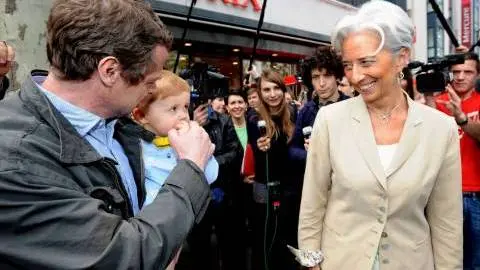FX: Firmer dollar into US election cliffhanger
An improved rate advantage, Middle East tensions and potential defensive positioning ahead of the US election all suggest that the dollar can hang on to recent gains this month. Either way, after 5 November, the whole FX picture might change dramatically
The dollar is now on a firmer footing compared to a month ago. As illustrated in the chart below, the average USD two-year swap rate differential against other G10 currencies has rebounded as the anticipated 50bp Federal Reserve cuts have been priced out, and markets have adopted a relatively more dovish stance on other central banks such as the European Central Bank. Looking ahead to the coming weeks, we find it challenging to identify a catalyst for a dollar decline unless US economic data significantly disappoints and revamps half-point Fed cut speculation.
Dollar rate advantage has rebounded

The external environment is, incidentally, more favourable to the dollar. Tensions in the Middle East still have room to escalate, and Israel's potential targeting of Iranian energy facilities could lead to further surges in oil prices. Even if equities have shown resilience, the new layer of uncertainty and volatility in geopolitics and commodities can keep the dollar supported.
That said, the entire FX landscape risks being entirely reshaped in one month’s time by the US elections, which have so far been a “dormant” theme. We discuss different scenarios in detail in our US election guide for the FX market. For now, we note that markets appear to be pricing in – even if not fully – a win for Kamala Harris. This means that:
- We could see some pre-emptive USD buying into the election ahead of a tightly contested vote;
- The FX reaction to a win for Donald Trump would likely be larger and asymmetrically more bullish for the dollar.
EUR/USD may struggle to bounce back above 1.10 into 5 November, with risks skewed to the 1.08 area as lower eurozone inflation should now prompt the ECB to cut rates in October. While the yen can outperform pro-cyclical currencies on US election volatility, USD/JPY could climb back above 150 in the near term due to higher USD rates and a delay in additional Bank of Japan tightening. The recent dovish tone from Bank of England Governor Andrew Bailey adds greater dovish flexibility to the GBP curve, and sterling could remain pressured below the 1.30 mark.
In the rest of the G10 space, we continue to expect some downward volatility in AUD and NZD, which are highly exposed to the Trump risk, while CAD could perform more strongly in the crosses. In Scandinavia, SEK should remain more resilient than NOK despite Riksbank cuts, while pockets of risk aversion can keep EUR/CHF capped.
This publication has been prepared by ING solely for information purposes irrespective of a particular user's means, financial situation or investment objectives. The information does not constitute investment recommendation, and nor is it investment, legal or tax advice or an offer or solicitation to purchase or sell any financial instrument. Read more
Download
Download article
10 October 2024
ING Monthly: Central bankers left holding the baby This bundle contains 14 Articles